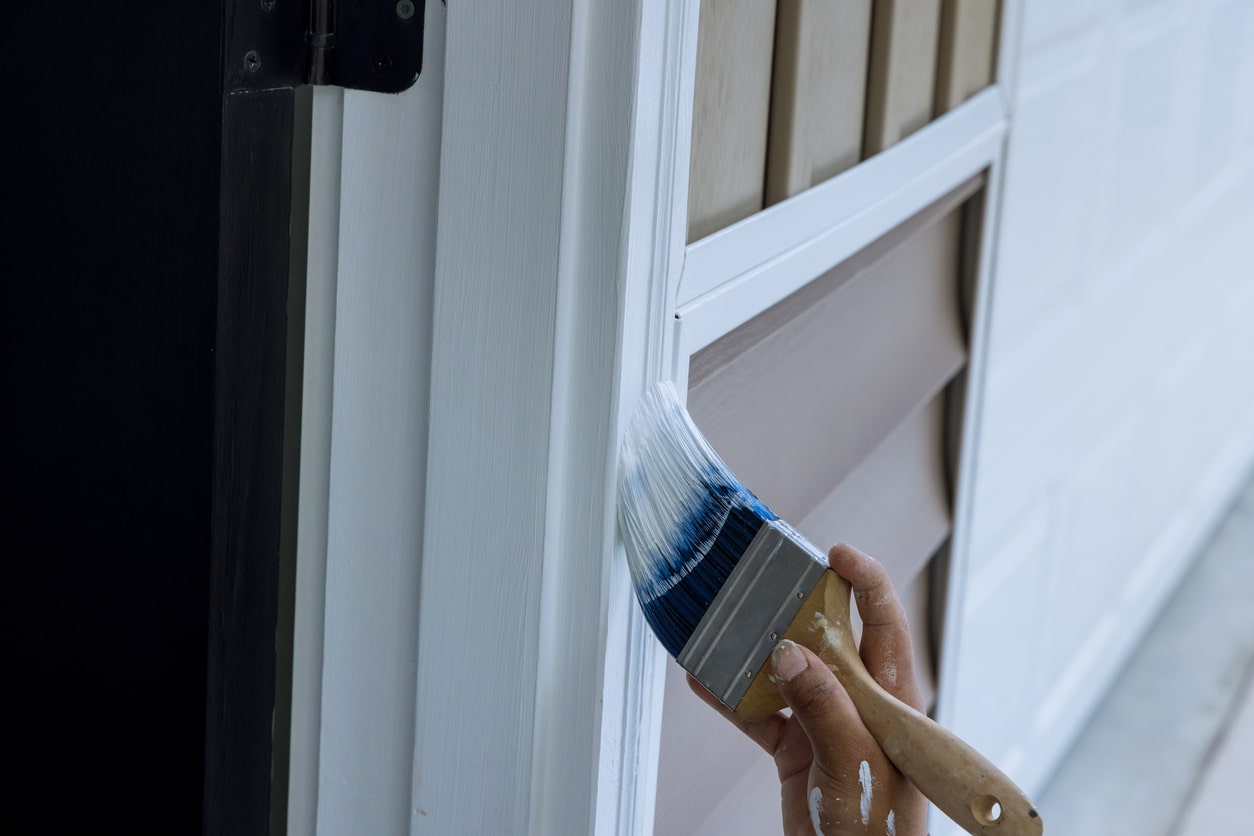Painted surfaces, both inside and outside your property, work hard all year round. They protect walls, woodwork, and other materials from everyday wear, moisture, temperature fluctuations, and environmental damage. As winter approaches in the UK, it is the ideal time to carry out a thorough check of your property’s painted surfaces. Cold, damp conditions can quickly compromise finishes, so early attention can prevent small issues from becoming costly repairs.

At Alan Cox Decorating, with more than 40 years of experience in professional painting and decorating across Leicestershire and the Midlands, we know that preparation and ongoing care are the foundations of a long-lasting, high-quality finish. This winter maintenance checklist will guide you through practical steps to keep your painted surfaces in excellent condition.
Why Winter Maintenance Matters
Winter in the UK brings challenges such as rain, frost, high humidity, and limited daylight. These conditions can:
- Cause exterior paint to crack, peel, or blister when moisture gets trapped beneath the surface.
- Accelerate timber damage if protective coatings on doors, windows, and fascias are compromised.
- Lead to condensation indoors, encouraging mould and mildew on painted walls and ceilings.
- Highlight scuffs and wear on high-traffic interior surfaces, especially during the festive season when homes often see more visitors.
By following a maintenance checklist, homeowners and business owners can extend the life of their painted surfaces and avoid more significant remedial work in the spring.
Winter Maintenance Checklist for Painted Surfaces
1. Inspect Exterior Paintwork Thoroughly
Walk around your property and look closely at exterior walls, fascias, soffits, window frames, and doors. Pay particular attention to:
- Cracking or Peeling: Even small cracks can let in moisture, which freezes in winter and causes further damage.
- Chalky Surfaces: A powdery residue can indicate paint breakdown, requiring attention.
- Flaking Around Windows and Doors: These are high-exposure areas where protective coatings are most vulnerable.
Tip: Carry out inspections on a dry day with good natural light so you can see surface detail clearly.
2. Check Caulking and Sealants
Caulking around windows, doors, and joints provides an essential barrier against water ingress. Over time, it can shrink, crack, or pull away. If left unchecked, gaps allow rain and cold air to penetrate, undermining both paintwork and the structure beneath.
- Press lightly along caulked edges to check for movement or crumbling.
- Re-apply quality exterior sealant where necessary.
- For timber windows and doors, ensure joints are fully sealed before temperatures drop further.
3. Clean Painted Surfaces
Dirt, algae, and mould spores thrive in damp conditions, particularly on north-facing walls or shaded areas. Cleaning painted surfaces in winter helps maintain both appearance and performance.
- For exterior walls, use a soft brush and a mild detergent solution to remove dirt. Avoid high-pressure washing in freezing conditions.
- For interiors, gently wipe painted walls with a damp cloth and mild soapy water, particularly in kitchens, bathrooms, and hallways.
- Always dry surfaces thoroughly to prevent streaking or new mould growth.
4. Address Signs of Damp or Mould Indoors
Winter’s closed windows and central heating often create condensation, which leads to damp patches and mould growth on painted walls and ceilings.
- Look for black spots, bubbling paint, or discolouration, especially in corners, bathrooms, or near windows.
- Treat affected areas with a mould-removal solution before repainting.
- Consider using anti-condensation or mould-resistant paints in problem rooms.
At Alan Cox Decorating, we frequently recommend specialist finishes in bathrooms and kitchens to give long-lasting protection where moisture is unavoidable.
5. Touch Up Interior Walls Before the Festive Season
High-traffic rooms such as living rooms, hallways, and staircases often show scuffs, scratches, and chips. A quick touch-up before winter gatherings helps maintain a smart, welcoming appearance.
- Keep leftover paint from previous projects labelled and stored correctly for touch-ups.
- Lightly sand damaged spots and apply a thin coat for a seamless finish.
- If walls look particularly tired, winter is a good time to redecorate indoors, as modern paints are low-odour and quick-drying.
6. Protect Wooden Surfaces
Timber elements such as doors, gates, and window frames are especially vulnerable in winter. Paint acts as a protective skin, but once breached, wood can absorb water, leading to swelling, rot, or splitting.
- Check for areas where paint has worn thin or flaked away.
- Apply a protective coat of paint or wood stain before severe weather sets in.
- Indoors, inspect skirting boards, bannisters, and window sills for chips and scuffs, which are easily repaired with touch-up paint.
7. Monitor Ventilation and Heating
Even the best paint cannot resist constant condensation. Managing indoor air circulation is as important as surface preparation.
- Use extractor fans in bathrooms and kitchens.
- Open windows briefly each day to allow fresh air circulation, even in cold weather.
- Maintain consistent indoor heating to avoid cold patches where condensation can form.
8. Plan Ahead for Spring Projects
Winter is also the time to schedule larger decorating jobs for spring. Exterior painting is best carried out in milder, drier conditions, so arranging consultations and quotes during winter means work can begin promptly once the weather improves.
Professional Help for Long-Lasting Results
While homeowners can complete many of these maintenance steps themselves, some issues, such as widespread peeling, severe damp, or large-scale repainting, require professional expertise. With decades of experience across Leicester and the Midlands, Alan Cox Decorating offers:
- Careful surface preparation to ensure new paint adheres properly and lasts longer.
- Use of high-quality paints and materials suited to specific environments.
- Attention to detail in both residential and commercial settings.
- Flexible scheduling to minimise disruption during winter months.
By combining preventative care with professional decorating support, you can ensure your painted surfaces continue to protect and enhance your property throughout the winter and beyond.
Final Thoughts
Winter can be tough on painted surfaces, but a simple seasonal checklist makes all the difference. From inspecting exterior paintwork and sealing joints, to cleaning, tackling damp, and touching up interiors, these small steps can protect your investment and keep your property looking its best.
If you spot issues beyond quick maintenance, Alan Cox Decorating is here to help with trusted advice and professional workmanship. With more than 40 years serving homes and businesses across Leicestershire, our team ensures your paintwork is ready to withstand the season ahead.




